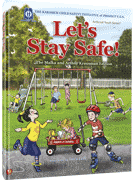





In the last few years, English-language Orthodox (charedi) periodicals have proliferated. (A little disclosure is appropriate here--I've written for both Aim! and Mishpacha Junior, am a long-time subscriber to HaModia.) Interestingly, as new publications show up, the older ones change formats (sometimes repeatedly) in order to improve their market share.
For example: HaModia came out with an online edition and now so has the Yated (honestly, I don't know which happened first, but I heard about HaModia's first). HaModia came out with a unique format for the kids' mag that competes more with Weekly Reader than with any other charedi publication and sets it apart. Supplements targeted towards kosher "foodies" are in vogue almost across the board. Most recently, I noticed that Binah Bunch is now divided in two--one half "Clubhouse" (which seems designed to compete with Mishpacha Junior) and one half a tween magazine (more similar to Aim!).
Watching these "renovations" is sometimes entertaining (trying to guess the reasons behind different editorial decisions, for example), but it's also a little depressing because these magazines HAVE to compete in order to make money. I enjoy all of them, but I can't afford to purchase all of them on a regular basis. Neither can the average Jewish consumer, so these magazines and newspapers have to compete for our subscriptions.
It also has implications for us writers. If there's more variety out there, there are more niches writers can develop for their writing...which is fabulous. But if everyone just tries to do the same thing, just better, (how many food magazines do we really need?) writers get locked in. I've seen a little of both in these format changes.
On a happier note, I think the competition has forced all the magazines to strive for a level of excellence that I don't think has been reached before. Not only are there more magazines, but they are better than ever, I think.

